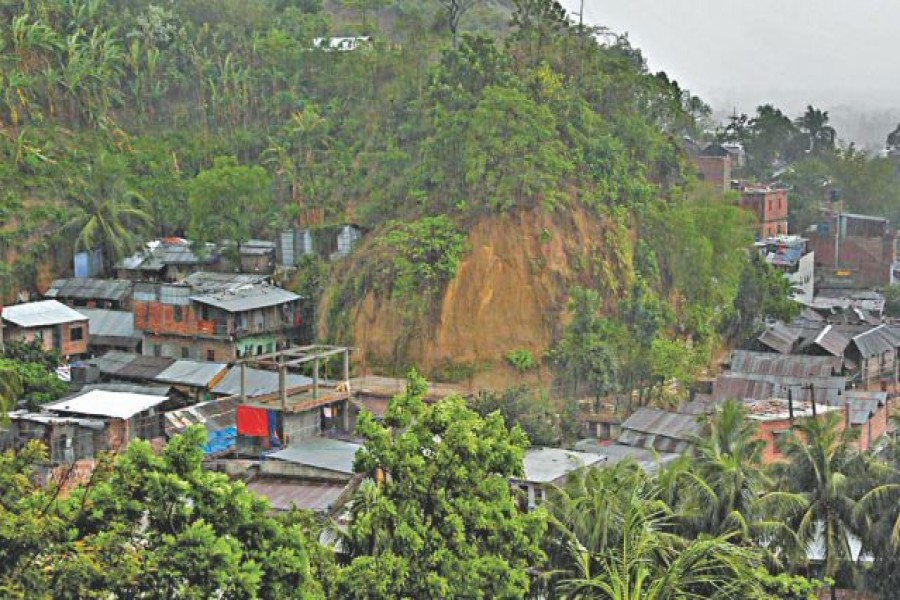More than 1.0 million people have been living on the slopes of 30 hills in Chattogram amid danger of landslides during monsoon.
According to the Divisional Hill Management Committee, these 1.0million people have been living in the 30 hills in Chattogram city, Sitakunda and Jangal Salimpur areas of the district hiring makeshift houses at lower rents.
Available statistics reveal that 127 people died in landslide in 2007, 11 in 2008, 15 in 2009 and 2010, 17 in 2011, 23 in 2012, five in 2013, six in 2015, 17 in 2016 and 29 in 2017.
Sources at the district administration said 30 hills have been identified as vulnerable to landslide. Of these, 12 were identified as vulnerable after the deadliest 2007 landslides. Some 666 families have been living in 12 hills in the city.
Among them, 320 families living in Motijharna and Batali hills in Lalkhan Bazar, 186 families in AK Khan hill, five in Ispahani hill, 12 in hills in Lake City area, 27 in Koiballodham Biswa Colony area hill, 22 in Akbar Shah area hill, 11 in City Corporation area hill, nine in Foyes Lake residential area hill, 38 in Forest Research Institute Academy area hill, three in Nasiraband Industrial area and 33 in Jalalabad Housing Society area hills.
The Divisional Hill Management Committee was formed after the death of 127 people in the deadliest landslide in 2007. The committee has, however, failed to take any effective step in the last 11 years to prevent living on hill slopes.
Sources here said the activities of the committee are only limited to holding meetings during monsoon.
The committee, however, came up with 36 recommendations, including freeing the hills from illegal occupants, deforestation, rehabilitation of the people who live on hill slopes and stopping hill cutting, lease out and grabbing, to prevent such deaths.
But the district administration was learned to have opted for having a temporary solution to the problem instead of implementing the recommendations.
On April 11, the local administration conducted a drive to evacuate people from hill slopes but their move did not see any success, reports UNB.
Contacted, additional deputy commissioner (tax) and member secretary of the Divisional Hill Management Committee Abdul Aziz said, "We'll conduct a drive in the hill areas soon, it's our routine work every year. Those who are at high risk of falling victims to landslides will be evicted. We want to save them but they don't understand it as they get houses there at lower rents."
Meanwhile, the local administration has decided to disconnect power, water and gas supply lines to the houses on the hill slopes as part of forced evacuation like the previous years.
During a recent visit to Motijharna in the city, the UNB correspondent saw that some semi-pacca and makeshift houses are being built in the area.
Talking to the inhabitants of the area, it is known that some influential people are building makeshift houses in the area and encourage people to live there at lower rents.
Mohammad Raju, a resident of Anwar Shaheb Colony in Motijharna area, said, "During monsoon every year, the local administration evicts us and snap power and gas links, but those connections get restored later."
Divisional commissioner Abdul Mannan said a letter has already been sent to the Prime Minister's Office with a proposal for the permanent rehabilitation of the people living in Sitakunda and Jangle Salimpur areas.
Delwar Majumdar, convener of Sachetan Nagorik Committee, Chattogram, said the long-term recommendations for rehabilitating these people still remained unimplemented.
He stressed the need for identifying those influential people who have been building houses on hill slopes and encouraging people to live there.


